I designed a MLP, fully connected, with 2 hidden and one output layer. I get a nice learning curve if I use batch or mini-batch gradient descent.
But a straight line while performing Stochastic Gradient Descent (violet)

What did I get wrong?
In my understanding, I do stochastic gradient descent with Tensorflow, if I provide just one train/learn example each train step, like:
X = tf.placeholder("float", [None, amountInput],name="Input")
Y = tf.placeholder("float", [None, amountOutput],name="TeachingInput")
...
m, i = sess.run([merged, train_op], feed_dict={X:[input],Y:[label]})
Whereby input is a 10-component vector and label is a 20-component vector.
For testings I run 1000 iterations, each iterations contains one of 50 prepared train/learn example. I expected an overfittet nn. But as you see, it doesn't learn :(
Because the nn will perform in an online-learning environment, a mini-batch oder batch gradient descent isn't an option.
thanks for any hints.